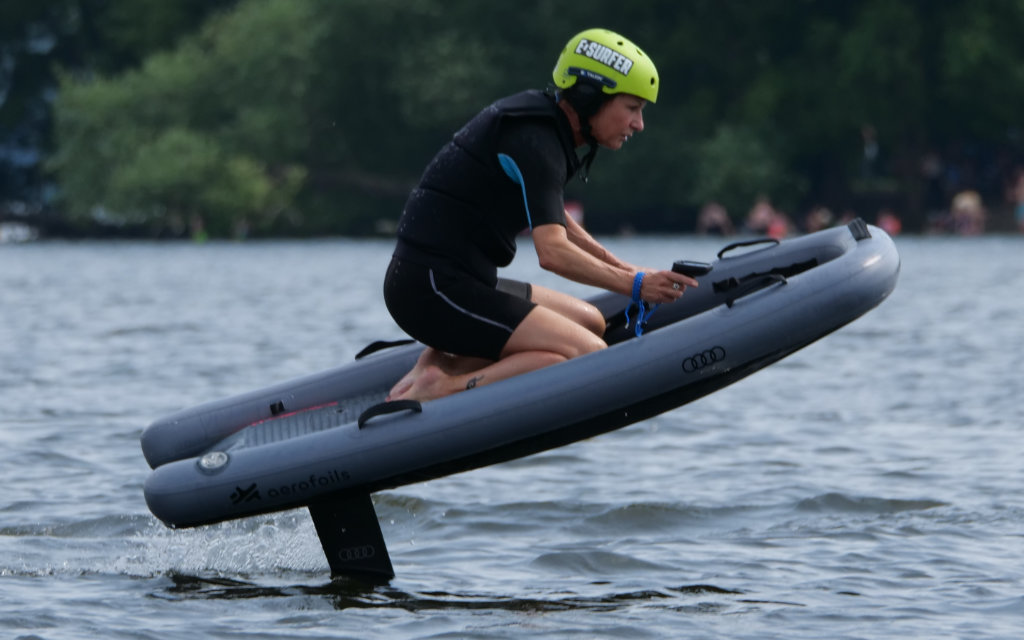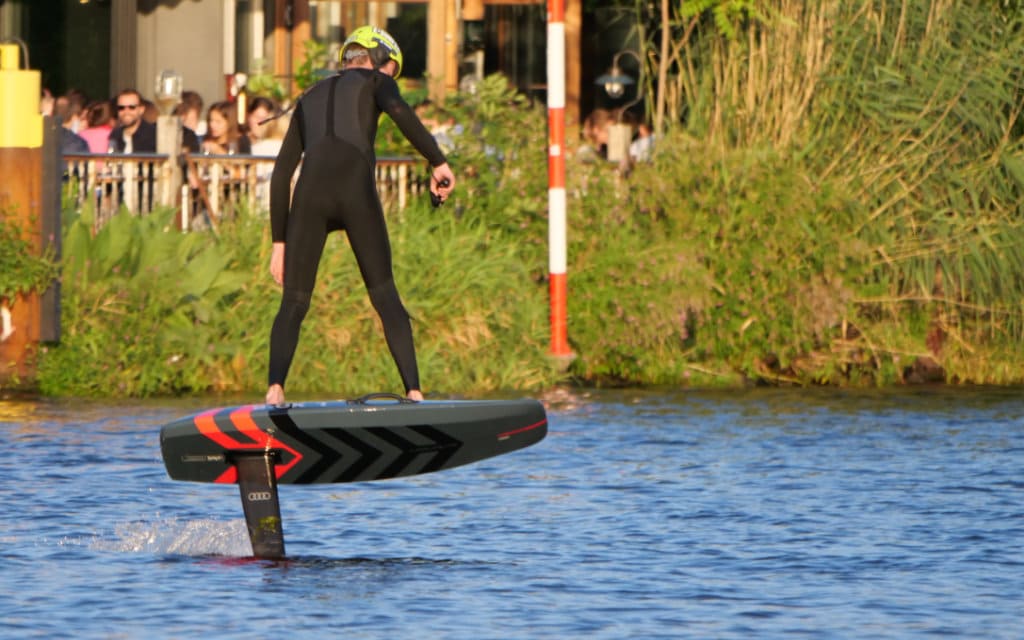Is e-foiling difficult? Find out why e-foiling is easier than you think. Float above the water in just two hours.
Is e-foiling difficult to learn?
Many people ask themselves: “Is e-foiling difficult?” – the clear answer is: “No!” E-foiling is easier than you might think – especially with the right equipment and a little good instruction.
I'm Andreas from E-Surfer, your specialist dealer for e-foils in Berlin. We stock various brands such as Lift Foils, Fliteboard, Aerofoils, and Awake Boards. You can not only view the boards at our store, but also test them directly on the water – right next to our shop.
We also run several eFoil schools in Berlin, Germany, and throughout Europe. Since 2019, we have taught hundreds of students how to e-foil in our eFoil courses. And I am certain that 99% of students would say no to the question of "whether "Is e-foiling difficult".
We recorded a video entitled “Is e-foiling difficult?” for the E-SURFER YouTube channel:
If you are interested in the topic of eFoil, I suggest subscribing to the E-SURFER YouTube channel. New eFoil videos are posted here regularly.
Why e-foiling is easier than it looks
E-foiling may remind you of James Bond. How is it possible that he (or she) can just float silently over the water like that? But e-foiling is hardly any more difficult than stand-up paddleboarding (SUP).
The big difference is that with e-foiling, you fly over the water. With the right setup, you can learn how to do this in one to two hours. It's similar to wakeboarding on a water ski cableway.
Unlike other water sports such as windsurfing, kitesurfing, or wing foiling, you “only” have to control the board and not a sail or kite as well.
Board size is crucial
The larger the board, the easier it is to handle. That's why there are different eFoil models from different brands:
- E-Foil Scooter (approx. 230 liters): Perfect for beginners. Very stable, short mast, no risk when falling. An example is the HyperFly. No training required!
- Inflatable boards (150 liters): Inflatable, stable, ideal for first attempts. The AirFly, for example, is good for schools.
- All-rounder boards (100 liters): The classic for advanced beginners.
- Small sports boards (40–70 liters): For experienced riders looking for agility and dynamics.
Tip: For beginners, an E-Tube system is often worthwhile, as it increases the volume of the board and makes it more stable. You can simply remove it later when you feel more confident.

The wing also influences stability
Large wings provide more lift and make riding easier.
In our training courses, we usually use a 2000 wing combined with a tube. This allows you to “take off” in just a few minutes. But even without a tube, you'll be flying within 20 minutes, at least in a kneeling position.
The smaller the wing, the sportier—but also more challenging—the riding experience.
Safety: Jet propulsion instead of propellers
In the past, all e-foils had propellers, as can still be found on inexpensive e-foils today. Today, jet propulsion is the safer and much more modern alternative.
Why? The jet system has no open blades. You can't injure your fingers or toes – ideal for beginners and families.
The performance is now just as powerful as with propellers, but without the risk.
How long does it take to learn e-foiling?
With a large board and jet propulsion, you'll be flying safely over the water in 1 to 2 hours. By comparison, windsurfing, kitesurfing, or surfing usually take much longer.
E-foiling is intuitive – once you find your balance and stay relaxed, it almost works by itself.
If you can't attend a training course, we also have a training video that shows you step by step how to get started safely:
Conclusion: E-foiling isn't difficult—you just need the right setup
Whether you want to glide relaxed across the water or carve sportily, with the right board, large wing, and jet propulsion, e-foiling is easy and safe to learn.
After just a short time, you'll understand why so many people love the feeling of floating. Is e-foiling difficult? No 😉
